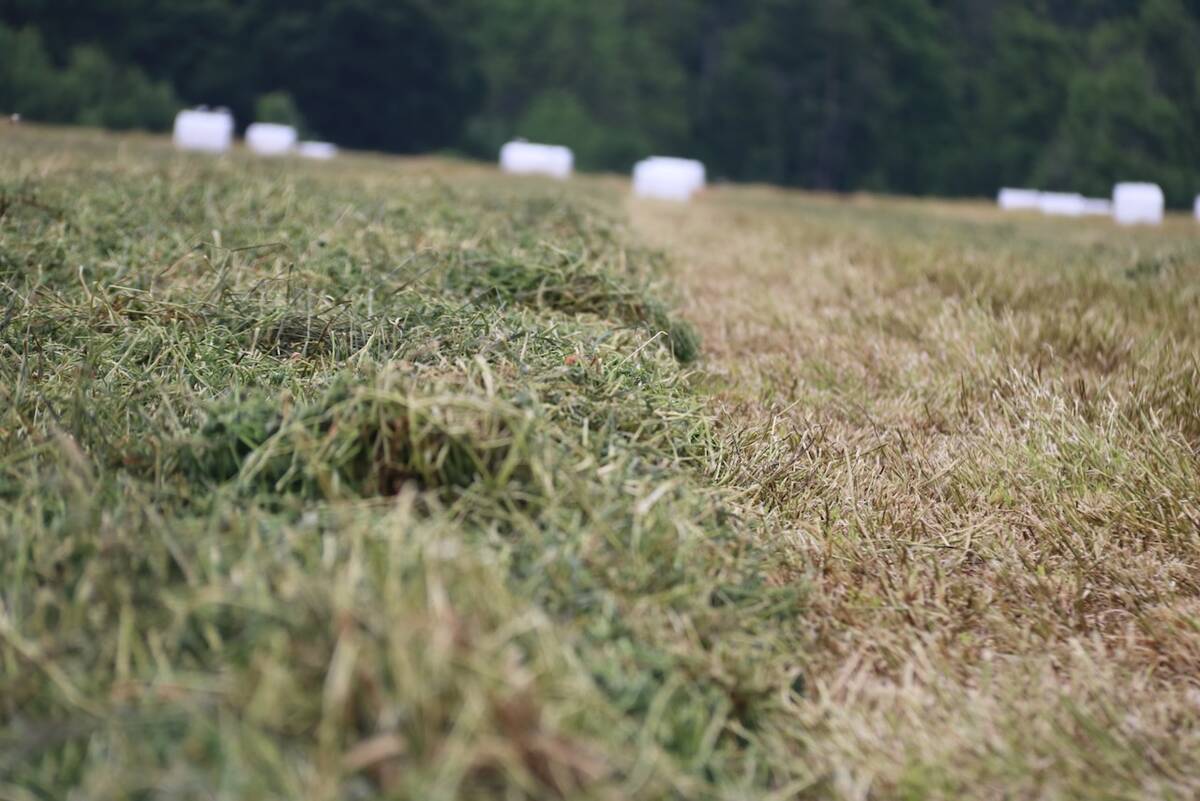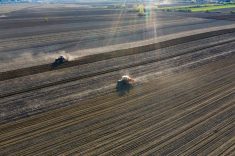Establishing a vertical tillage system on your farm means first getting rid of compaction layers. That may require some deep tillage first
Editor’s note: This is the second instalment of a five-part series.
Believe it or not, that old chisel plough of yours in the back yard is a vertical tillage tool, assuming it has spikes on it as opposed to sweeps. This group of tools is used for the first step in the vertical tillage transition, the removal of existing tillage layers.
This group includes disk rippers, disk chisels, heavy chisel ploughs, inline rippers and aerators. Which tool you use depends on how much residue cover you want afterwards, how deep you want to work and how smooth a finish you want to leave. A good rule of thumb with these tools is that just because you can work deeply doesn’t mean you have to, try to set the machine to run one to two inches below your deepest compaction layer to eliminate it without needlessly burning fuel.
Read Also

New high-performance forage training program to launch in 2026
A new Canadian Forage and Grasslands Asssociation high-performance forage program will be a resource for farmers, agronomists and others in the forage sector.
Disk rippers and disk chisels are more common to the U.S. Midwest than Western Canada. These tools are designed to reach 10 to 18 inches deep, and the disk gangs on them bury a lot of residue, leaving a very black finish. The parabolic shanks on these units have a tendency to mix soil profiles and bring deeper soil up, which isn’t always beneficial in our saline soil areas or where topsoil is relatively shallow. Some units offer a parabolic shank or more of a chisel plough shank, with the latter doing less mixing.
Examples of those implements are the Landoll WeatherProofer, Landoll DCD, Case Ecolo Tiger and Salford 9800.
Inline rippers
Inline rippers or subsoilers (also called no-till rippers) use a straight shank so there is very little mixing of the soil profiles. There is little surface disturbance, so most of the residue cover is maintained. These units are designed to reach as deep as 18 inches to eliminate deep compaction. They lift the soil and squeeze it between the shanks, thereby breaking up compaction without destroying the soil structure.
As with any deep tillage tool, inline rippers require a lot of horsepower (about 50 horsepower per shank, at least), and they use fuel. This is the ideal tool if you find you have deep compaction layers from large equipment, quite often found in the 10- to 12-inch range. They are typically used in four- to six-year rotations.
Examples of these implements are the Blu-Jet Sub-tillerr 4, AgrowPlow and Great Plains Sub Soiler.
Aerator tools
Aerator tools use eight-inch-long spikes on a gang to penetrate the soil, with the displacement of the tine fracturing soil much in the same idea as an inline ripper. Gang angle is usually adjustable to determine how much tillage is done and how much residue is buried. Often, some sort of harrow system is mounted behind the machine for levelling and residue management.
These units offer high working speeds with less fuel use than a ripper. They will remove compaction layers as deep as eight inches, sometimes as deep as 10 inches in the right conditions. This is an ideal tool for removing shallower compaction layers and working headlands and approaches every year.
Typical aerator implements include the Smart Till, Aerway and Gen Till.
Chisel Ploughs using spikes (or specially designed sweeps) can also be used to remove density layers without putting more layers in. How deep you want to work in order to remove the layers and or compaction will determine what kind of chisel plough you want. Our standard chisel ploughs with 600-pound trips may do the job for shallower work. But if you want to work more than six inches deep in harder conditions, you may need to look at 1,000-pound trips or stronger. Remember, though, the the heavier the trip force, the harder the pull!
Implements in this category include the Landoll Chisel Plough, Salford 9700 and Bourgault 9800. †














